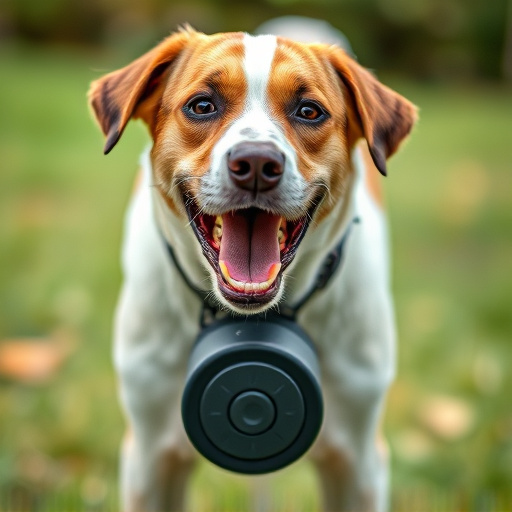Dog repeller technology uses specific sound frequencies to deter canine behavior, leveraging scientific understanding of dog hearing. Handheld devices target frequency ranges from gentle distraction to irritating ultrasonic sounds (above 20 kHz) that are inaudible to humans but distressing to dogs. These portable deterrents offer various carrying methods—straps, belts, or pouches—for convenient use during walks or hikes. Proper usage techniques include holding the device at eye level and pointing it towards approaching dogs while maintaining surprise. Safety precautions involve keeping children and non-target pets away, testing in controlled environments, and being aware of wind distractions.
“Unravel the power of dog repeller technology, designed to protect your space without harm. This article delves into the science behind frequency ranges, exploring how these devices work and why specific ranges are effective. We’ll guide you through handheld dog deterrent devices, highlighting design innovations and convenient carrying methods.
Additionally, discover essential safety considerations for optimal use, ensuring both peace of mind and the well-being of your furry neighbors.”
- Understanding Dog Repeller Technology: The Science Behind Frequency Ranges
- Handheld Dog Deterrent Devices: Design and Carrying Options
- Effective Use and Safety Considerations for Dog Repellers
Understanding Dog Repeller Technology: The Science Behind Frequency Ranges
Dog repeller technology leverages specific frequencies to deter canine behavior, utilizing a scientific approach based on sound waves and their impact on dogs’ senses. The effectiveness of these devices lies in targeting the right frequency range, which can vary depending on the desired outcome—from gently distracting a dog to causing discomfort in more advanced models.
The science behind it involves understanding how dogs perceive sound. Their hearing is more sensitive than humans’, with a broader range of audible frequencies. Repellers emit sounds within a particular frequency band, often in the ultrasonic range (above 20 kHz), which is inaudible to humans but can be detected and bothered by canines. This technology allows for safe, non-harmful methods of dog deterrence, with various handheld devices that utilize this principle, offering different carrying methods for ease of use during walks or in specific situations.
Handheld Dog Deterrent Devices: Design and Carrying Options
Handheld Dog Deterrent Devices are designed for convenience and portability, offering various carrying methods to suit different user preferences. These devices typically feature a compact design that easily fits in one’s hand or pocket, making them accessible for immediate use whenever needed. The most common carrying options include straps, belts, or pouches specifically crafted for these deterrents, ensuring they remain within reach without causing discomfort during outdoor activities like hiking or walks in unknown territories.
Each carrying method has its advantages, with some focusing on ease of access and others prioritizing comfort. For instance, a strap or lanyard allows users to keep the device close at hand while engaging in physical activities, while a belt-mounted design distributes the weight evenly, making it suitable for longer periods. Pouches, often equipped with adjustable belts, offer a versatile option that can accommodate different sizes and preferences. These diverse carrying options cater to various lifestyles, ensuring dog owners or hikers always have a reliable deterrent readily available.
Effective Use and Safety Considerations for Dog Repellers
When using a handheld dog deterrent, it’s crucial to understand its frequency range and how to employ it effectively. These devices work by emitting sounds or vibrations that are unpleasant to dogs, encouraging them to stay away. For optimal results, hold the device at eye level and point it towards the approaching dog, ensuring the frequency reaches the animal directly. Regularly vary your carrying methods—from hands-free lanyards to secure holsters—to maintain surprise and effectiveness.
Safety is paramount when using any kind of repeller. Always keep it out of reach of children and pets that are not target animals. Test the device in controlled environments first, and be mindful of wind or other factors that could redirect the sound or vibration. In case of unexpected behavior from deterred dogs, have a plan to ensure your safety while they retreat.
In conclusion, understanding the science behind dog repeller technology and its effective frequency ranges is key to choosing the right handheld dog deterrent device. By considering various carrying methods, you can ensure these devices are both accessible and safe for use. Remember that responsible application and safety precautions are paramount when utilizing any kind of dog repeller.
